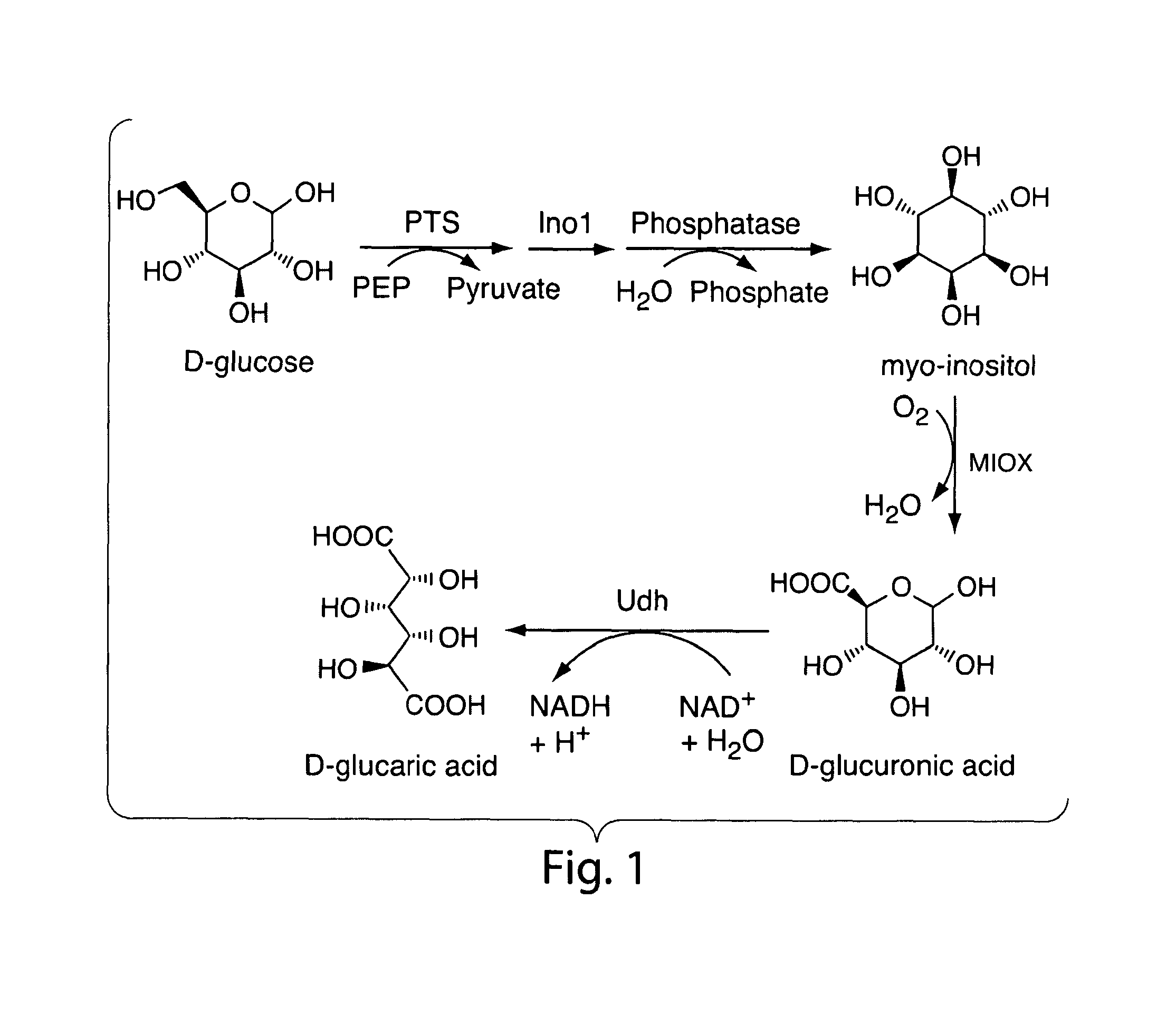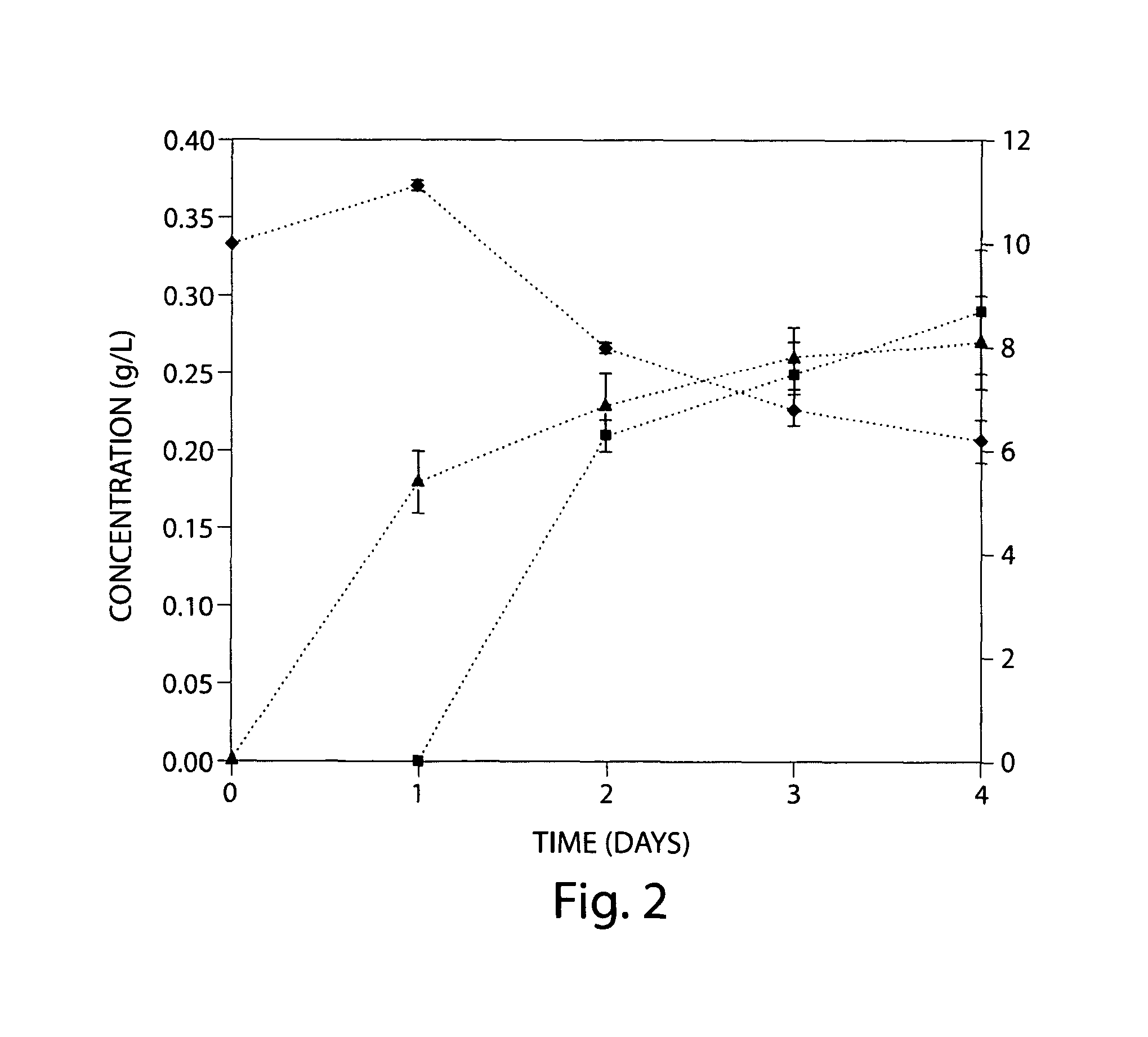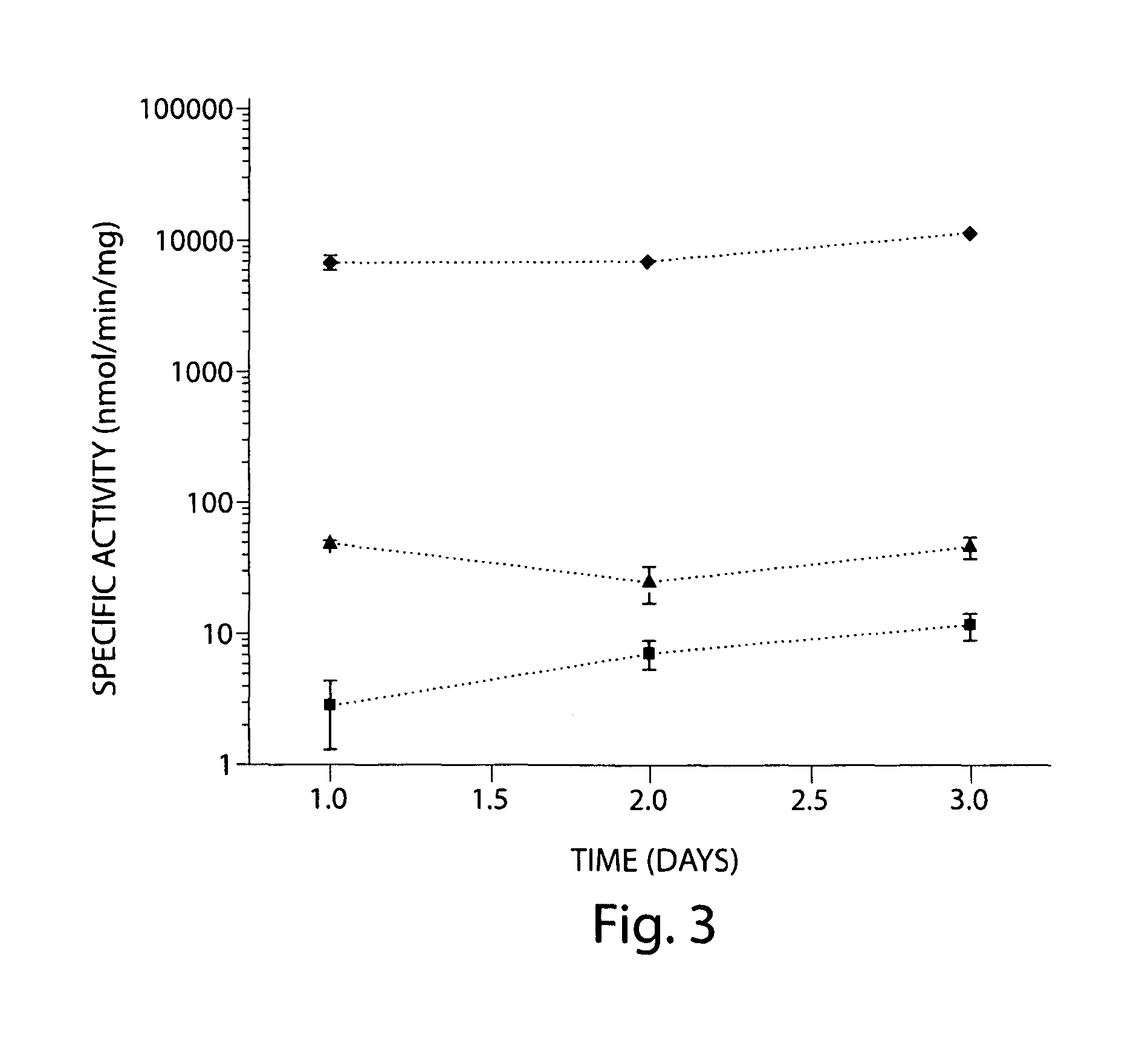Cellular production of glucaric acid through recombinant expression of uronate dehydrogenase and myo-inositol oxygenase
a technology of glucaric acid and uronate dehydrogenase, which is applied in the fields of lyases, enzymology, organic chemistry, etc., can solve problems such as inefficient pathways, and achieve the effect of increasing the flux of pathways and high quantities of glucaric acid
- Summary
- Abstract
- Description
- Claims
- Application Information
AI Technical Summary
Benefits of technology
Problems solved by technology
Method used
Image
Examples
example 1
Glucaric Acid Production: Biosynthetic Pathway in Recombinant Escherichia coli
[0075]A synthetic pathway has been constructed for the production of glucuronic and glucaric acids from glucose in Escherichia coli (FIG. 1). Co-expression of the genes encoding myo-inositol-1-phosphate synthase (Ino1) from Saccharomyces cerevisiae and myo-inositol oxygenase (MIOX) from mouse led to production of glucuronic acid through the intermediate myo-inositol. Glucuronic acid concentrations up to 0.3 g / L were measured in the culture broth. The activity of MIOX was rate-limiting, resulting in the accumulation of both myo-inositol and glucuronic acid as final products, in approximately equal concentrations. Inclusion of a third enzyme, uronate dehydrogenase (Udh) from Pseudomonas syringae, facilitated the conversion of glucuronic acid to glucaric acid. The activity of this recombinant enzyme was more than two orders of magnitude higher than that of Ino1 and MIOX and increased overall flux through the...
example 2
References for Example 2
[0165]1. Amann, E., B. Ochs, and K. J. Abel. 1988. Tightly regulated tac promoter vectors useful for the expression of unfused and fused proteins in Escherichia coli. Gene 69:301-315.[0166]2. Ashwell, A., A. J. Wahba, and J. Hickman. 1958. A new pathway of uronic acid metabolism. Biochim Biophys Acta 30:186-187.[0167]3. Bateman, D. F., T. Kosuge, and W. W. Kilgore. 1970. Purification and properties of uronate dehydrogenase from Pseudomonas syringae. Arch Biochem Biophys 136:97-105.[0168]4. Buell, C. R., V. Joardar, M. Lindeberg, J. Selengut, I. T. Paulsen, M. L. Gwinn, R. J. Dodson, R. T. Deboy, A. S. Durkin, J. F. Kolonay, R. Madupu, S. Daugherty, L. Brinkac, M. J. Beanan, D. H. Haft, W. C. Nelson, T. Davidsen, N. Zafar, L. Zhou, J. Liu, Q. Yuan, H. Khouri, N. Fedorova, B. Tran, D. Russell, K. Berry, T. Utterback, S. E. Van Aken, T. V. Feldblyum, M. D'Ascenzo, W. L. Deng, A. R. Ramos, J. R. Alfano, S. Cartinhour, A. K. Chatterjee, T. P. Delaney, S. G. Lazaro...
PUM
| Property | Measurement | Unit |
|---|---|---|
| temperatures | aaaaa | aaaaa |
| concentrations | aaaaa | aaaaa |
| concentrations | aaaaa | aaaaa |
Abstract
Description
Claims
Application Information
 Login to View More
Login to View More - R&D
- Intellectual Property
- Life Sciences
- Materials
- Tech Scout
- Unparalleled Data Quality
- Higher Quality Content
- 60% Fewer Hallucinations
Browse by: Latest US Patents, China's latest patents, Technical Efficacy Thesaurus, Application Domain, Technology Topic, Popular Technical Reports.
© 2025 PatSnap. All rights reserved.Legal|Privacy policy|Modern Slavery Act Transparency Statement|Sitemap|About US| Contact US: help@patsnap.com



